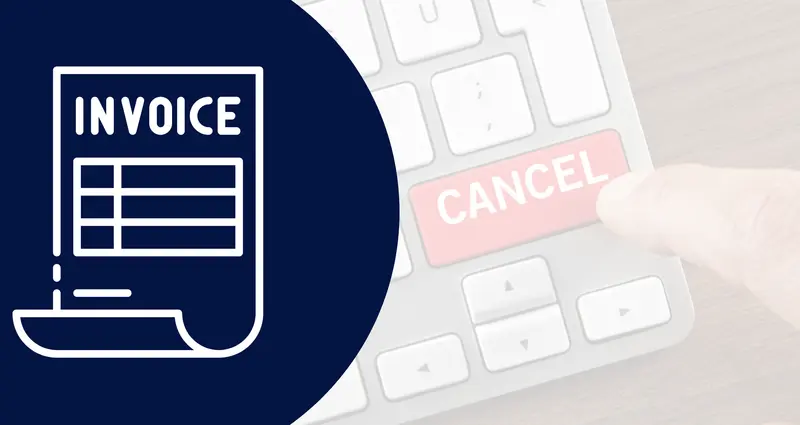Dear Team,
I’m interested in a demo of TaxInvoicePro to explore how it can streamline my business operations. Please share the details and schedule.
Looking forward to your response.
Thank you.

E-invoice cancellation is an essential aspect of the GST system, allowing businesses to correct mistakes and ensure accurate records. Under GST, the e-invoice system helps reduce fraud, streamline processes, and improve transparency. However, understanding the process and rules related to e-invoice cancellation is crucial for maintaining compliance.
E-invoice cancellation refers to the process of invalidating an e-invoice that has already been issued. There can be various reasons for canceling an e-invoice, such as errors in the invoice details, incorrect GST rates, or mistakes in the buyer's information. The cancellation ensures that the records are corrected, and businesses can avoid potential penalties for incorrect reporting.
The e-invoice cancel process is straightforward but must be completed within the prescribed time frame. Here’s how businesses can cancel an e-invoice:
1.Log into the GST Portal: Go to the GST portal and log into your account using your credentials.
2.Select the E-Invoice: Find the e-invoice you wish to cancel by searching for the invoice number or using other relevant details.
3.Choose Cancellation Option: Once the invoice is located, select the option to cancel. You’ll be asked to confirm the cancellation.
4.Generate Cancellation Reference Number: After confirmation, the system will generate a cancellation reference number, which acts as proof of the cancellation.
5.Update Your Records: Ensure that your accounting records are updated to reflect the cancellation, and any input tax credit is adjusted accordingly.
It is essential to follow the proper steps to ensure that the cancellation is done correctly to avoid errors.
One common question is, “Can I cancel e-invoice?” Yes, it is possible to cancel an e-invoice, but there are certain conditions and time limits to consider. E-invoices can only be canceled within a specific time frame after they are issued. If you attempt to cancel the invoice beyond the allowed time limit, you will not be able to do so directly through the GST portal.
The e-invoice cancellation time limit is a critical factor to keep in mind. As per the GST rules, an e-invoice can be canceled within 24 hours of its generation. This time limit ensures that businesses can make corrections quickly and efficiently without disrupting their GST filings. After the 24-hour period, if you need to correct an error, you’ll have to issue a credit note instead of canceling the invoice.
After canceling an e-invoice, it's crucial to ensure that the cancellation is reflected correctly in your records. The e-invoice verification process ensures that canceled invoices are updated and that businesses can avoid discrepancies in their tax filings. Verification also ensures that the GST records are accurate, so businesses don't face issues during audits or assessments.
There are several key rules businesses should follow when it comes to e-invoice cancellation:
The e-invoice cancellation must be done within 24 hours of issuance. Once canceled, a reference number is generated, which must be retained for record-keeping purposes. Businesses must update their accounting systems and GST returns to reflect the cancellation accurately. Failure to cancel an incorrect e-invoice within the time limit may result in penalties or the need to issue a credit note.
E-Invoice cancellation is a critical part of maintaining accurate records and staying compliant with GST regulations. Understanding the e-invoice cancellation process, time limits, and the rules involved helps businesses avoid errors and penalties. Make sure to cancel any incorrect e-invoices within the 24-hour limit and update your records accordingly to ensure smooth GST compliance.